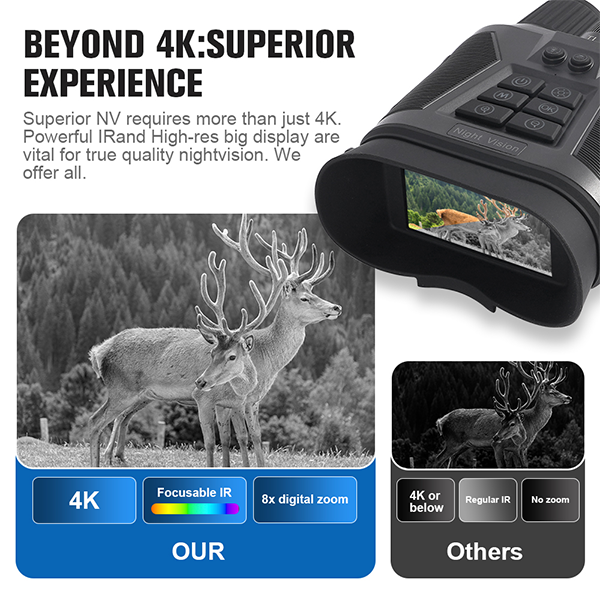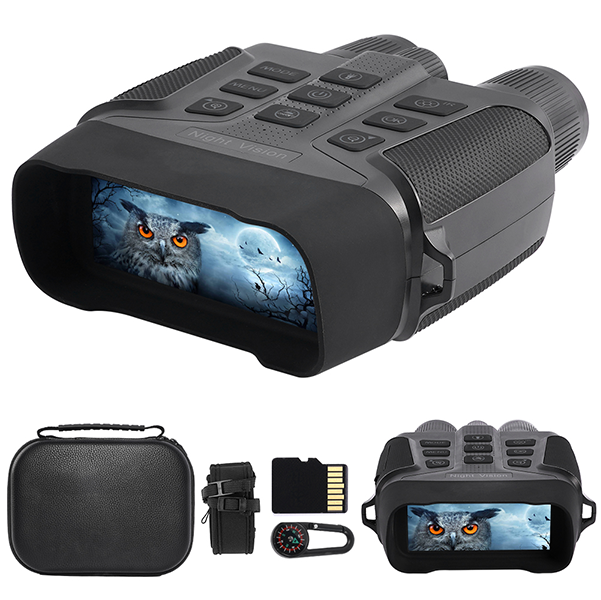In the world of hunting and wildlife observation, visibility often determines success and safety. As outdoor activities extend into dusk or complete darkness, traditional optical tools fall short. This is where night vision devices play a vital role. By amplifying available light or using infrared technology, night vision enables hunters, researchers, and nature enthusiasts to clearly see in low-light or no-light conditions. In recent years, the use of night vision for hunting and wildlife observation has become increasingly popular, offering better performance and more immersive outdoor experiences.
To understand why night vision is essential, it helps to know how it works. A night vision device captures minimal ambient light—such as moonlight or starlight—and amplifies it thousands of times using an image intensifier tube. This process creates a visible image even in near-total darkness.
There are three main types of night vision technologies commonly used today:
Image Intensifier Night Vision: Converts low levels of light into clear, green-tinted images.
Thermal Imaging: Detects heat signatures from living beings and objects, ideal for spotting targets hidden in brush or behind obstacles.
Digital Night Vision: Uses a sensor to process and display images on a screen, often integrating recording and zoom features.
Each type has its advantages depending on the environment and activity. For example, infrared night vision is widely used for nocturnal animal studies, while thermal imaging for hunting is valuable in total darkness or dense terrain.

When it comes to hunting, night vision scopes and goggles provide clear advantages that go beyond visibility.
First, improved target detection allows hunters to identify animals even in shadows or underbrush. The ability to see details such as movement or heat signatures ensures more accurate tracking and ethical shooting.
Second, enhanced safety plays a major role. Hunters can detect obstacles, terrain changes, or other individuals in the area, reducing the risk of accidents.
Third, silent and stealthy operation is another strength. Unlike flashlights or spotlights, night vision emits no visible light that could disturb wildlife.
Finally, better range and accuracy help hunters plan their movements effectively. A night vision scope for hunting can deliver consistent image quality over long distances, ensuring precision in every shot.
For researchers and wildlife enthusiasts, night vision for wildlife observation brings unique benefits that traditional optical tools cannot match.
One key advantage is non-intrusive observation. Animals behave more naturally when not disturbed by visible light. This allows observers to study genuine nocturnal behaviors such as feeding, movement, or interaction patterns.
Moreover, data collection and ecological monitoring become easier. With infrared and thermal devices, scientists can track species populations and habitats even in remote or dark environments. These insights are essential for conservation and biodiversity research.
Another benefit is 24-hour monitoring capability. By combining night vision and thermal imaging, observation can continue day and night without interruption. For field researchers, this means more accurate data and a comprehensive view of animal activities across time.
While night vision enhances capability, proper use is essential for safety and device longevity.
First, choose the right device for your purpose. A monocular night vision device is lightweight and ideal for handheld or helmet use, while binocular models offer depth perception and comfort for extended viewing.
Second, adjust brightness and focus carefully. Overexposure to bright light can damage the image intensifier, while poor focus can cause eye strain.
Third, maintain your equipment regularly. Keep lenses clean, store devices in dry environments, and check batteries before each outing. Using protective covers and anti-fog treatments extends the product’s life and performance.
Lastly, follow local laws and safety guidelines. Some regions regulate night hunting or limit the use of certain devices. Responsible and lawful use ensures both personal safety and wildlife protection.

Selecting the best night vision equipment depends on the user’s needs, environment, and budget.
Purpose and Environment: Hunters may prefer devices with long detection ranges and weapon mounts, while wildlife observers might choose lighter models for portability.
Performance Specifications: Check for resolution, magnification, and field of view. Higher resolution provides sharper images, while wider fields of view are better for scanning large areas.
Weight and Comfort: For long hours of use, a lightweight device reduces fatigue and improves stability.
Brand Reliability: Choosing a reputable night vision device manufacturer ensures consistent quality, warranty support, and reliable performance.
By evaluating these factors, users can select a device that meets both practical and technical needs.
In today’s world, night vision technology is no longer limited to military or professional use. It has become a valuable tool for hunters, wildlife researchers, and outdoor enthusiasts who seek safety, precision, and immersion in their nighttime adventures.
With benefits ranging from better visibility and safety to long-term equipment reliability, adopting the right night vision for hunting and wildlife observation can significantly improve the outdoor experience.
If you’re looking for high-quality and durable night vision solutions, Yijing Optoelectronics provides a full range of professional monocular and binocular night vision devices. As a trusted night vision device manufacturer, Yijing Optoelectronics delivers advanced optical products designed for precision, reliability, and superior performance in every environment.